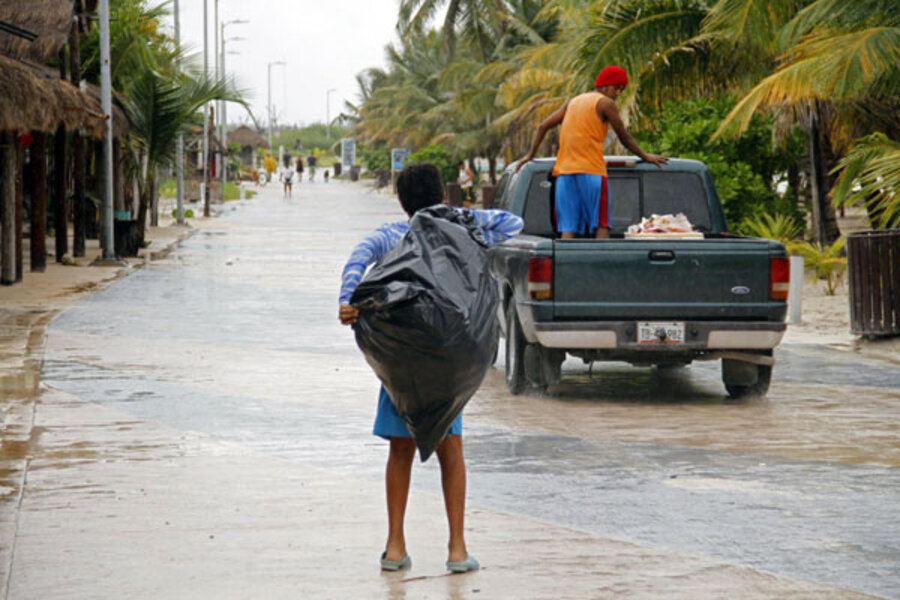Tropical Storm Ernesto races across Yucatan Peninsula
Loading...
| CHETUMAL, Mexico
Tropical Storm Ernesto spun across Mexico's Yucatan Peninsula Wednesday after forcing the evacuation of thousands of tourists and fishermen from beaches in Tulum and the Costa Maya.
There were no immediate reports of storm deaths or major damage, though Ernesto ripped down billboards, toppled trees and cut electricity service as it hit the cruise ship port of Mahahual shortly before midnight Tuesday as a hurricane with sustained winds of 85 mph (140 kph).
"In many places the windows were shattered," said Flori Cruz, a 27-year-old cook from the beach town.
Ernesto had weakened to a tropical storm while moving over land Wednesday, with winds near 50 mph (85 kph), but it was expected to regain hurricane strength after emerging over the southern Gulf of Mexico in a region dotted with offshore oil rigs on course for a collision with the coast near the city of Veracruz.
The storm was located over the southwest part of the peninsula and was moving west at 15 mph (24 kph).
State oil company Petroleos Mexicanos announced Tuesday it was closely monitoring the storm, but did not report any plans to evacuate oil rigs.
Chetumal, the capital of Quintana Roo state, was the closest sizable city and officials moved more than 1,300 tourists there from resorts in Mahahual, Bacalar and other spots that were expected to see heavier rain and wind.
In the city of Tulum to the north, some 6,000 tourists sheltered in hotels away from the beach.
Luana Antonicelli, a 23-year-old tourist from Melbourne, Australia, said she and her 20-year-old brother left their beachfront cabana surrounded by tropical jungle and decided to spend the night at the Hotel Tulum, a 20-room, one-story building about two miles (three kilometers) inland.
"The people at our hotel told us to come into town because it's too dangerous to stay there," Antonicelli said.
She said most people at the Hotel Tulum were hunkering down inside their rooms even though it was only raining lightly Tuesday night.
"It's a bit annoying because I want to be on the beach, but these things happen," Antonicelli said, adding that she and her brother decided to stay outdoors as much as possible. "I see it as an adventure."
Authorities also prepared two kindergartens in Tulum as shelters, and tourist guide Cruz Garcia came to one from Punta Allen, a low-lying coastal settlement.
"To be over there is a risk because the tide rises and there could be a disaster," Garcia said, adding that he twice went through strong hurricanes while living in the neighboring state of Campeche.
Soldiers and police evacuated all residents of Punta Allen and other low-lying coastal settlements, said Luis Gamboa of Quintana Roo's Civil Protection office.
Two cruise ships scheduled to dock on the Riviera Maya put off their arrival.
The storm struck south of the big resort areas of Cancun and the Riviera Maya, but officials prepared shelters there as a precaution.
On its way to Yucatan, the storm swirled over open sea parallel to Honduras' northern coast, but officials there said the storm hadn't caused damage or injuries.
Meanwhile, Tropical Storm Gilma neared hurricane strength in the Pacific Ocean about 645 miles (1,040 kilometers) southwest of the southern tip of Mexico's Baja California, with winds near 70 mph (110 kph). The storm was not expected to threaten land.







